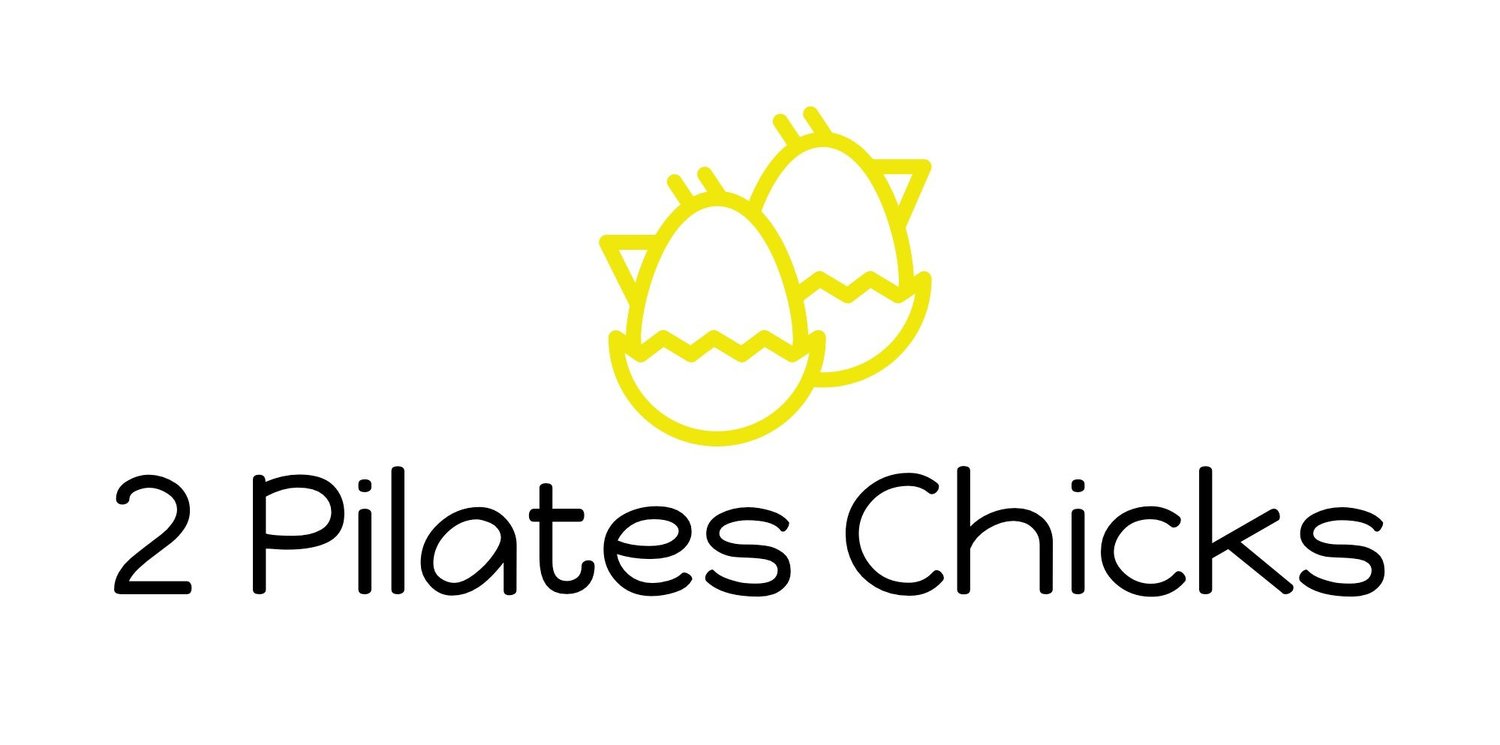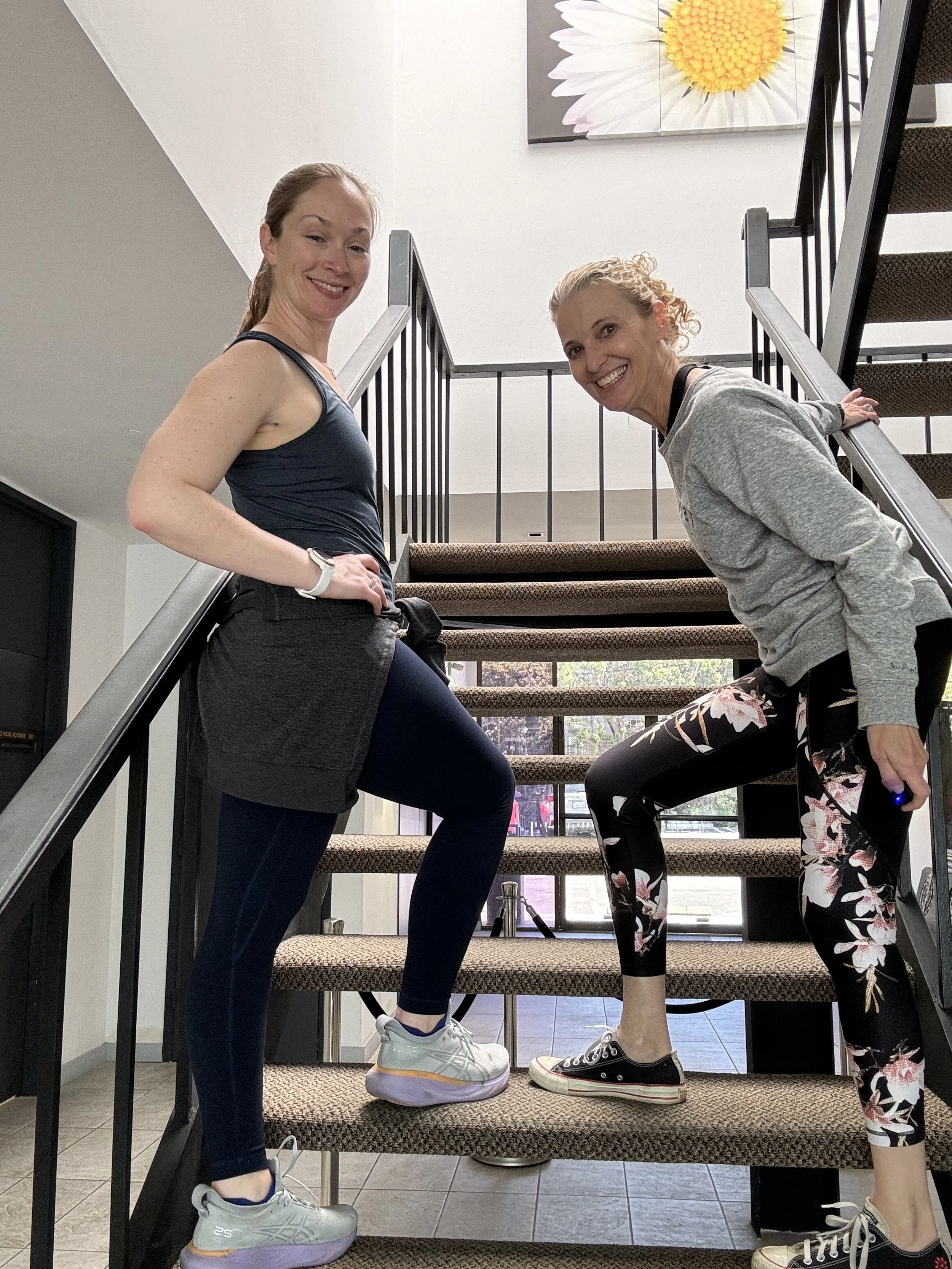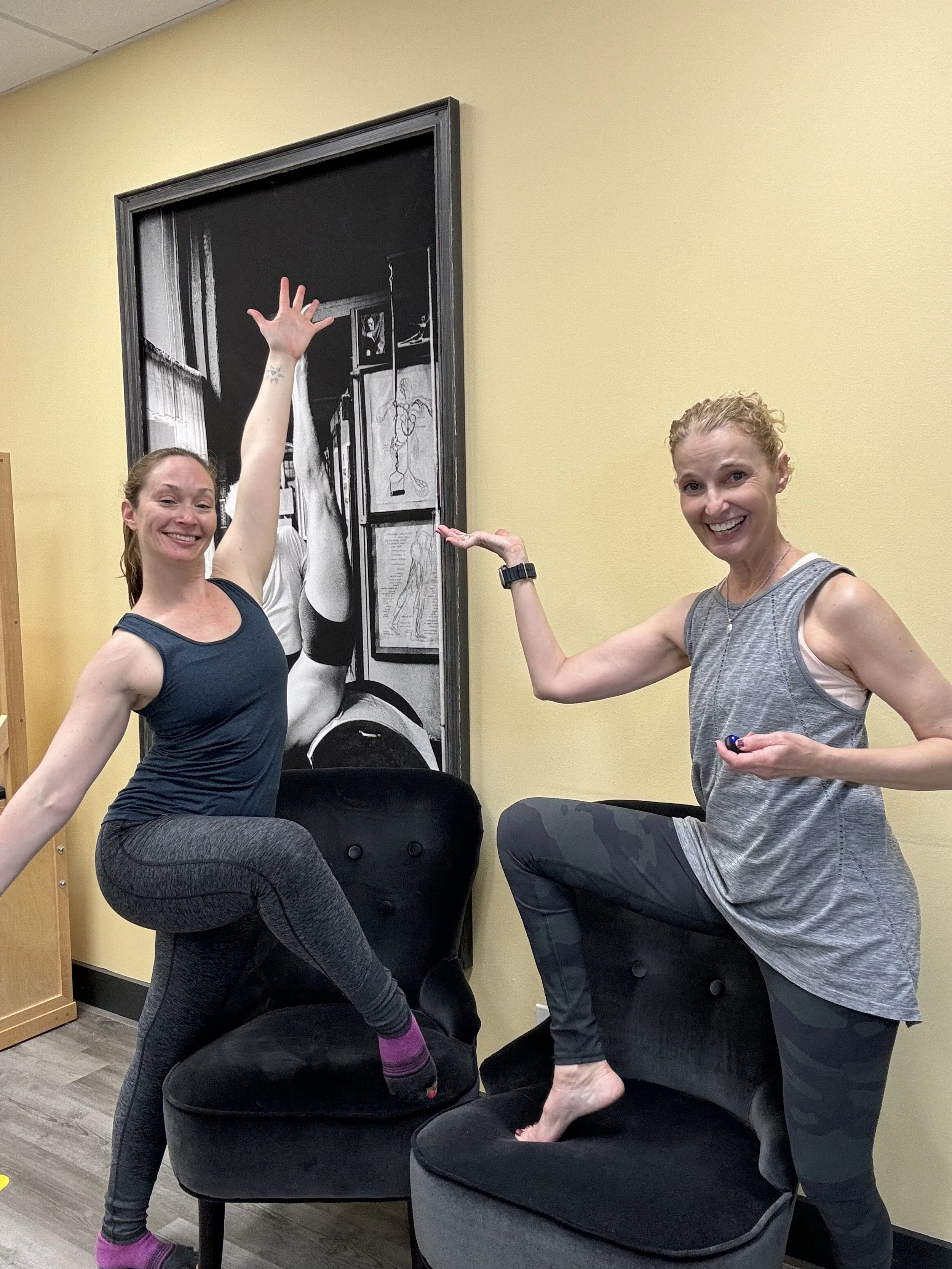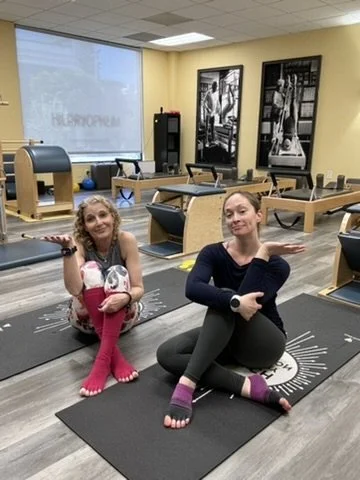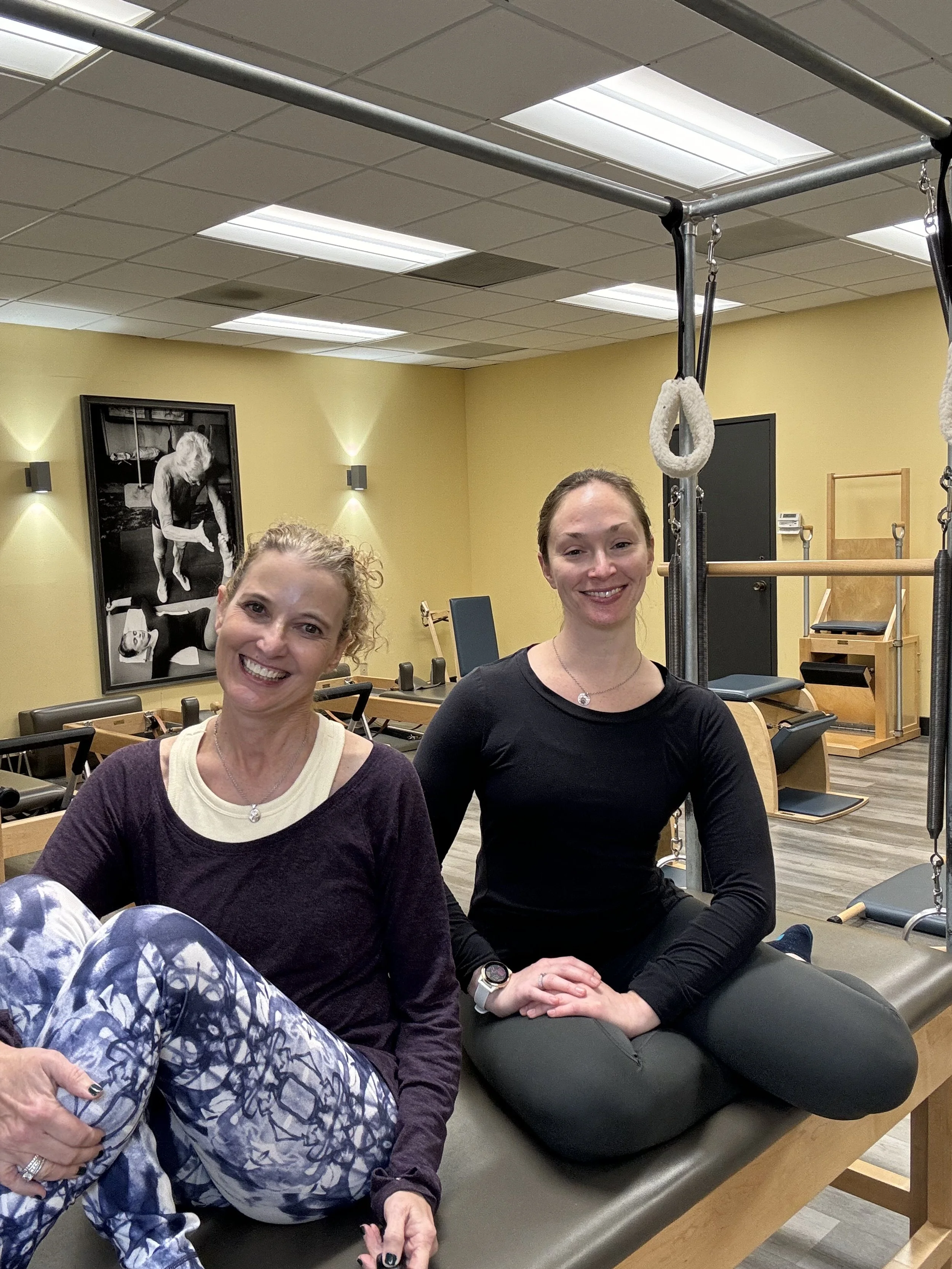Can Pilates Teachers benefit from experiencing an injury?
Is there a silver lining to injuries? Can injuries be a form of learning? What can Pilates teachers learn from their own injuries, and why is that beneficial?
In season 5 Episode 5, "Learning from Your Injuries", we discuss each of our own recent experiences with injuries, our healing journey, and how that has helped us better understand our clients' experiences. Pain is a universal experience, but for Pilates teachers, it can be a valuable teaching experience. Injuries offer a chance to develop empathy for clients and gain a deeper understanding of the healing process and specific injuries. We explore how going through an injury can benefit Pilates teachers and ultimately improve their teaching practice.
How Pilates teachers benefit from experiencing injuries:
1. Empathy for the client's experience, pain, fear, frustration, anxiety
2. Deeper understanding of the anatomy of the region and the phases of healing for the specific injury or condition, staying connected to updated research and scientific guidelines
3. Embodied knowledge of the injury and how to modify movement
4. Reconnecting to foundational movement studies or building blocks
5. Learning how to teach Pilates to an injured client finding appropriate load addressing both pain level and fear of movement
It can be very frustrating dealing with injuries, however, we like to say there is a silver lining to experiencing pain and injury as Pilates teachers. It allows us to connect to the work in different ways, understanding our clients better, while finding new ways of moving to adjust and modify our practices alongside pain and discomfort. Adapting to new ways of moving and thinking about movement through pain helps movement teachers understand what clients are experiencing when they come to us with injuries, developing an empathetic and embodied approach.
Many teachers now know with the ongoing development of pain neuroscience education, that continuing to move through an injury is generally beneficial, especially for chronic pain. Of course, some injuries need rest and a short period of immobilization and unloading in the acute phase. However, with long-term pain and most musculoskeletal injuries, an appropriate dosage of movement helps reduce pain sensitization and is healing.
However, it's easy enough to understand the benefits of "bumping up into the pain", or trying to find the "yellow zone" of sensitization from literature and research. Still, it's a whole other practice when experiencing it for ourselves. We realize that just saying “It is ok to feel some pain, just move with it” doesn’t help guide the client when they're afraid of re-injury. By going through our own injury and healing process, we understand why a client might feel hesitation to move again after feeling pain even if they know it's beneficial and protective to move the body. After experiencing injury there is likely anxiety around movement because of a fear of pain and re-injury or creating a new flare-up. There is often frustration and stress from feeling like we will never get out of a pain cycle, or depression from being limited by an injury.
Everyone responds differently to rehabilitation protocol, so it is extremely beneficial for teachers to approach an embodied understanding of the rehab practice guidelines in the literature. We should all be conscientious of precautions, contraindications, and rehab guidelines. But do we also have an understanding of the emotional weight that goes with injury, fear, guarding, and anxiety?
When a client comes to us with specific pain and conditions, especially as a new client, they will be hesitant and guarded, protecting their injury. When a client learns that we too have been through the same or a similar injury and that we understand their healing process and fear, it helps them trust our guidance and expertise, allowing them to feel safe with us. Once the client feels safer in their practice, trusting us to guide them with our expertise, and embodied understanding, deeper healing can begin through appropriately guided movement.
For a teacher, an injury can be seen as a silver lining, to be able to understand how to move through pain, how to adapt our movement practice, and the patience and trust needed in the journey. Every time we experience aches and pain, we see it as a learning moment. We can take the time to research the condition, explore and evaluate the sensation of the region, and take time to back off from intensity and give the body and mind the support to recover. It forces us to approach our Pilates practice differently. It is easier or more intuitive to teach Pilates to an injured client and how to modify the practice for their condition when we have done the same for ourselves in our practice.
Often coming back to the basics can be extremely beneficial, pulling our practice apart, and reconnecting with the foundations of movement. Especially for extremely active individuals, it can be frustrating to take a slower approach for a time, but as we learn when we're in the situation, it is immeasurably beneficial to allow the time for recovery and gentler, healing movement from foundations of stability, strength, and centering, relearning the practice, and finding new connections that might not have been necessary before. We learn how to differentiate pain from sensation, when to push through, and when to back off.
Chronic pain centralizes the nervous system's threat response, making any sensation feel like pain. Learning this distinction aids healing by allowing safe reintegration of full-body movement. It's about finding the right dosage of movement for the injured area, transitioning from limited movement to safe exploration and full-body integration. This empowers clients to manage pain sensations and take control of their healing journey.
As teachers, moving through our injuries we reconnect to the foundational building blocks of the Pilates practice, finding necessary regressions, reloading, and then progressing again. We embody the fear, frustration, and anxiety that comes from dealing with injury, and develop our empathy for others dealing with the same fear of pain or anxiety of movement. We learn how to differentiate between pain and sensation, when to push through sensation, and when to back off from painful stimuli to produce enough physical stress for healing without setting off a pain flare-up, and how to find the appropriate dosage for the injury. Most importantly, we learn how to listen to our bodies, and how to help clients understand and guide their sensations to take control of their healing journey alongside our guidance.
Using this as a learning experience for our teaching practice helps us not only understand the anatomical and physiological aspects of the injury and painful conditions but also the emotional experience of the client as they are dealing with pain and limitations. We are the experts in movement science and Pilates, but our clients are living with their conditions every day so they are the experts of their bodies' specifications. Therefore, they guide us with their current state of experience, and we guide them through moving with their conditions.
Movement heals, and we see that every day in teaching Pilates. We experience it ourselves when we're recovering from our injuries. It is important to continue a movement practice even when dealing with injury and pain which is why it is vital to help our clients find an appropriate movement practice while healing. This assists them in reduced sensations of pain, greater strength and stamina, and increased feelings of self-efficacy and capability throughout activities of daily living.
Just because we teach healing movement practices does not mean we are immune from injury or pain. When we have dealt with injuries we increase empathy and understanding of how our clients may feel in their experiences, so that together we work as a team to get them where they want to go. Experiencing injuries makes Pilates teachers better equipped to help clients both physically and emotionally.

